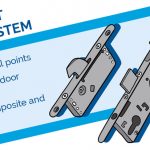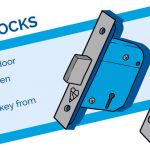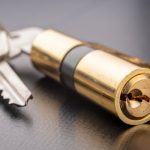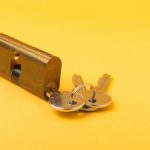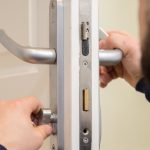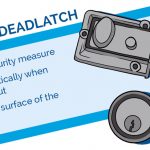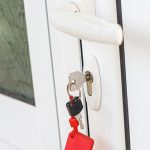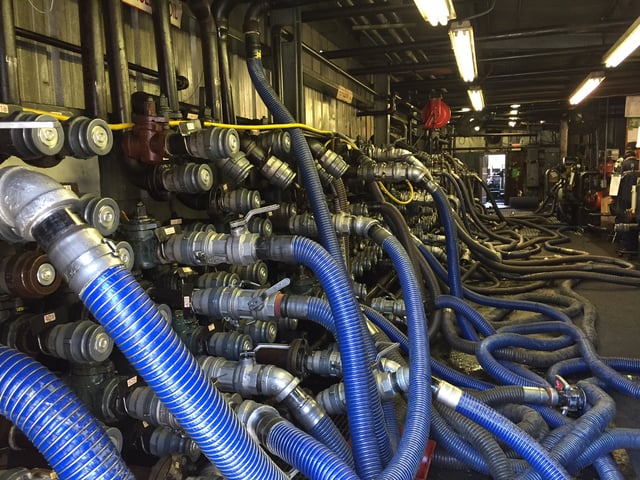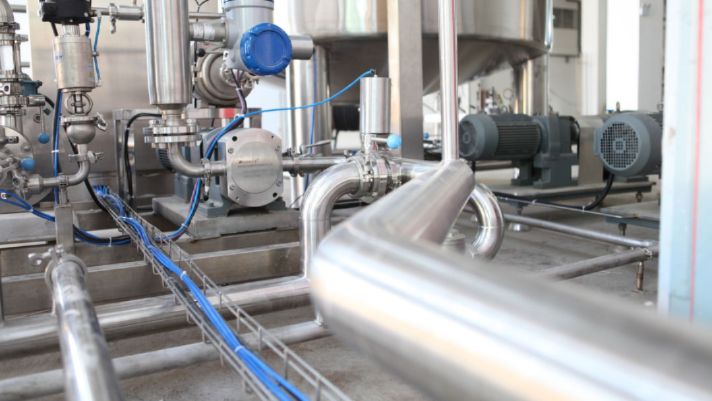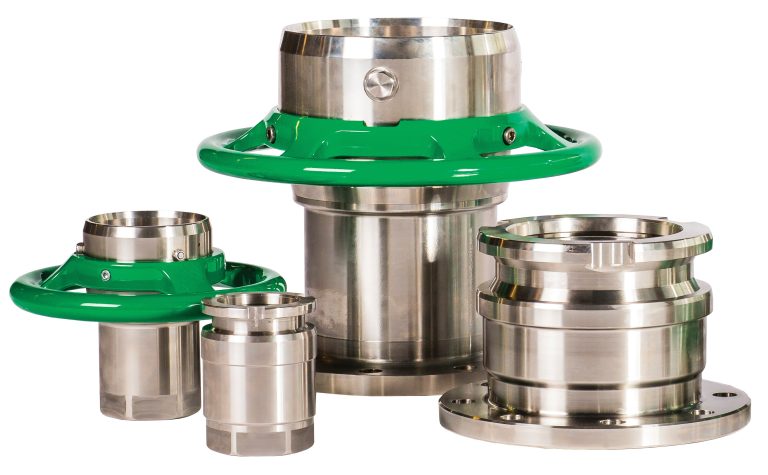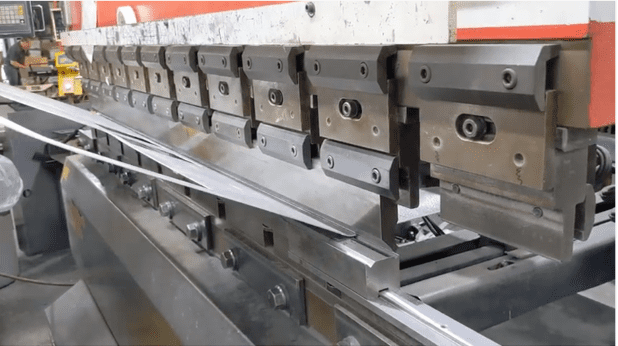Cylinder Locks: What Are They, Different Types and More – FS UK
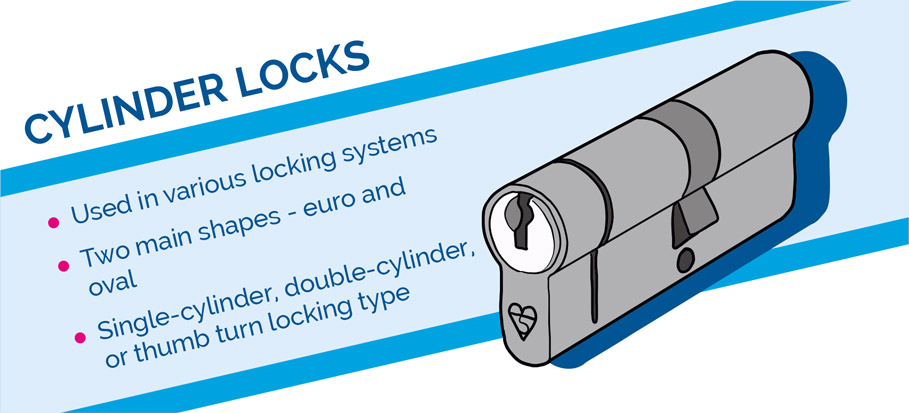
In this comprehensive guide, we delve into the world of cylinder door locks—how they work, their types, and the factors you need to consider when choosing and maintaining them for your home security. So, if you:
- Want to replace your lock, but don’t know where to start;
- Don’t know what kind of lock you need;
- Can’t decide on the size of the lock.
Then read along…
What are cylinder locks and how do they work?
Cylinder locks, often referred to as euro cylinder locks, are a type of lock that consists of a cylinder-shaped mechanism and a keyway on the face of the lock. Known for their versatility and ease of use, they’ve been installed in residential and commercial settings alike since the 1860s.
As far as who invented the cylinder lock, it was developed by Linus Yale SR, however, his son Linus Yale JR made the necessary improvements to the design that later revolutionised the door lock market.
And how do cylinder locks work? Cylinder locks work based on a simple yet effective mechanism that consists of two components:
- Cylinder – The central part of the lock, often referred to as the cylinder core, contains the keyway and the pins or tumblers that interact with the key;
- Key – The key is designed with unique cuts and ridges that match the pins inside the cylinder. When the correct key is inserted into the keyway and turned, it aligns the pins at the shear line, allowing the lock to turn and open.
Advantages and disadvantages of cylinder locks
Even though cylinder locks are used almost exclusively, they still have their advantages and disadvantages.
Advantages
- Security – Cylinder locks are known for their high level of security when used with the right materials and installation;
- Convenience – They are easy to rekey, making it simple to change locks when necessary;
- Versatility – Suitable for a wide range of applications, including residential and commercial doors.
Disadvantages
- Vulnerability – Lower-quality cylinder locks can be vulnerable to picking and bumping if not properly maintained;
- Key control – Maintaining key control can be challenging in some scenarios.
Cylinder lock sizes explained
Euro cylinder locks come in a number of sizes to fit various doors and are usually measured in millimetres. Full-size euro lock diameters typically range between 60mm and 120mm, with the centre cam placed exactly halfway up the barrel.
Meanwhile, half-euro cylinders are typically between 40 and 50mm long. These lengths might be specified as a whole number or in halves, for example, a 40 × 40mm euro lock will be 80mm long.
Doors made of uPVC are an exception. Because of the common dimensions of such doors, comparable locks – typically 70mm to 120mm – typically have uneven lock cylinder sizes – for example, an 85mm uPVC euro lock may be 45mm on one side and 40mm on the other.
The length of the lock you want will be determined by the thickness of the door, so always start by making your cylinder lock measurements.
This is how to measure a euro-cylinder lock:
- Remove the cylinder – First, remove the cylinder from the door by unscrewing the fixing screw on the faceplate;
- Measure the length – Use a ruler or a calliper to measure the total length of the cylinder from one end to the other. This measurement includes both the exterior and interior portions;
- Measure the cylinder’s diameter – Measure the diameter of the cylinder. Standard euro cylinders have a diameter of 10mm;
- Measure the cam length – Measure the length of the cam (the part of the cylinder that turns when the key is inserted). This measurement is crucial for ensuring that the lock operates correctly.
Once you have accurate cylinder lock measurements, you can select a replacement one that matches the size of the old one. It’s essential to get the length and cam size right to ensure the new cylinder works seamlessly with your door and key.
Are cylinder locks safe?
Euro cylinder locks, commonly used in the UK and Europe, have faced security concerns in the past due to a technique called “lock snapping”. This method involves applying force to the lock, causing it to break, and allowing unauthorised access. However, since 2011, the market now offers anti-snap locks, which have been a great success.
So, in this train of thought, what is the most secure cylinder lock? The answer can depend on your specific needs and budget; however, 3-star euro cylinders with anti-snap technology are often considered among the most secure options available. They provide a high level of protection against lock snapping and other forms of attack.
What are the different types of cylinder door locks?
Cylinder door locks come in various types, each designed to meet specific security and functionality needs. Below, we’ll explore the different types of cylinder locks used in the UK, categorising them based on shape, locking types, key functionality, and modern smart cylinder locks.
Types of cylinder locks based on shape
Euro cylinder lock
- Shape – Cylindrical with a keyway on one side;
- Common usage – Widely used in the UK and Europe for various door types;
- Pros – Versatile, available in various sizes, can be upgraded for higher security;
- Cons – Vulnerable to lock snapping without anti-snap features.
Oval cylinder lock
- Shape – Oval-shaped cylinder with a keyway on one side;
- Usage – Often used in wooden and uPVC doors;
- Pros – Versatile, available in different lengths and key variations;
- Cons – Vulnerable to picking and bumping without advanced security features.
Types of cylinder locks based on locking types
Single cylinder lock
- Locking – Operated by a key from the outside and a thumb turn or knob on the inside;
- Common usage – Suitable for interior doors and doors requiring easy access;
- Pros – Convenient, quick exit from inside without a key;
- Cons – Limited security for exterior doors.
Double cylinder lock
- Locking – Requires a key to operate from both the outside and inside;
- Usage – Typically used on exterior doors, providing higher security;
- Pros – Enhanced security, especially against unauthorised access from inside;
- Cons – Slower exit during emergencies as a key is needed from inside.
Thumbturn cylinder lock
- Locking – Operated by a key from the outside and a thumb-turn on the inside;
- Common usage – Found on doors where quick exit is needed;
- Pros – Quick exit with the thumb-turn on the inside;
- Cons – Limited security as it can be easily unlocked from the inside.
Cylinder locks based on key functionality
Keyed-alike cylinder locks
- Functionality – Multiple locks can be opened with a single key;
- Usage – Convenient for properties with multiple doors, reducing the number of keys needed;
- Pros – Simplifies key management, convenient for property owners;
- Cons – Reduced security if one key is lost or stolen.
Master-keyed cylinder locks
- Functionality – One master key can open multiple locks, while each lock also has its individual key;
- Usage – Ideal for businesses and properties with varying levels of access;
- Pros – Enhanced access control, different levels of access with individual and master keys;
- Cons – Complexity in key management and potential security risks if master key is compromised.
Smart cylinder locks
- Type – Electronic/mechanical hybrid locks or fully electronic smart locks;
- Functionality – Controlled via smartphones, keypads, or remote access;
- Pros – Convenient remote access, keyless entry, and advanced security features;
- Cons – Initial cost, potential vulnerabilities to hacking.
When choosing a cylinder door lock in the UK, consider your specific needs, door type, and security requirements. Brands like Yale and Era are well-recognised as providers of various options, including high-security cylinders and smart locks, to cater to different preferences and levels of protection.
How long do cylinder locks last?
A standard euro-cylinder lock, if of good quality and maintained well, may last anywhere from 5 to 10 years or more. On the other hand, high-security euro cylinders, which often have additional protective features like anti-snap technology, may have a longer lifespan and can last 10 to 15 years or more.
How to choose a cylinder lock for your home
Selecting a high-security cylinder lock for your home is essential to ensure security and peace of mind.
- Assess your security needs – Consider the security level required for your location. High-crime areas may benefit from high-security cylinder locks. Determine if it’s a residential or commercial property. Commercial properties often require more robust security measures.
- Choose a reputable brand – Look for well-known brands like Yale, ERA, or Mul-T-Lock known for their quality and security features. Check customer reviews and ratings to gauge the reputation and performance of specific lock models.
- Understand lock types – Euro cylinders are common in the UK. Choose between standard, high-security, or anti-snap euro cylinders based on your security needs. Consider oval cylinders for wooden or uPVC doors if they suit your door type.
- Check security features – Opt for a cylinder lock with anti-snap features to protect against lock snapping, a common break-in method. You can also look for locks with anti-pick and anti-bump features to enhance security even further.
- Measure properly – Ensure you measure your existing cylinder lock accurately to select the correct size for replacement.
- Consider keying options – Keyed-alike or master-keyed? Decide whether you want multiple locks with the same key (keyed-alike) or a master-keyed system for different access levels.
- Budget wisely – While budget is a consideration, prioritise quality and security over the lowest price. High-security locks may cost more but provide better protection in the long run.
- Review warranty and after-sales support – Check if the lock comes with a warranty and understand the terms. Ensure the manufacturer or supplier offers good customer support in case you encounter issues.
Cylinder lock installation and maintenance
Cylinder locks are commonly used on exterior doors, including front doors, back doors, and side entrances as they offer a good balance of security and convenience. While less common, you can also install them on interior doors, such as bedroom doors or home offices, when privacy or security is a concern.
Cylinder locks can also secure garages, sheds, and other outbuildings to protect valuable tools and equipment, and in some cases, they can be used to secure gates and fences, providing controlled access to the property.
The installation of cylinder locks can vary in complexity based on the type of door, the lock’s features, and the installer’s experience. For complex installations or high-security locks, it’s strongly recommended that you book a professional locksmith.
As far as maintenance goes, you must learn how to clean your lock cylinder and how to lubricate it too. The following tips will shed more light on this:
- Regular cleaning – Use a soft brush or compressed air to remove dust and debris from the lock’s keyway. Clean the exterior of the lock with a damp cloth to remove dirt and grime.
- Lubrication – Apply a silicone-based lubricant to the lock cylinder at least once a year to keep it functioning smoothly. Insert the key and turn it a few times to distribute the lubricant inside the lock.
- Avoid harsh chemicals – Avoid using harsh cleaning chemicals near the lock, as they can damage the finish and internal components.
- Key inspection – Periodically inspect your keys for signs of wear and damage. Worn keys can affect the lock’s performance.
We can install/replace your cylinder lock
Looking for a trusted locksmith service to address your security needs? You’re in the right place, then. At Fantastic Services, you’ll find a reliable expert just a call away whenever you face a lock-related challenge, be it with a cylinder lock or otherwise.
- Quick response – When you’re locked out or need urgent assistance, you can count on a swift and efficient solution.
- Professional expertise – The skilled locksmiths at your disposal come equipped with the training and tools needed to handle various lock and security tasks.
- Peace of mind – Knowing that your home or property is secure can add an extra layer of comfort to your life.
- Convenience – Say goodbye to the stress of DIY lock repairs. Our service makes it hassle-free for you.
- Solutions tailored to your needs – We understand your unique requirements and provide customised solutions that fit your situation.
Whether it’s lock installation, repairs, or emergency lockouts, our locksmith service has your needs covered.
Have your home security improved with a new lock!
Hire a professional for a smooth lock installation today!

Takeaways
- Euro cylinder locks consist of a cylinder-shaped mechanism and a keyway on the face of the lock;
- The locks come in various sizes measured in millimetres, typically ranging from 60mm to 120mm for full-size locks;
- These locks can last from 5 to 10 years for standard euro-cylinder locks and longer for high-security options;
- Cylinder locks are suitable for various areas of the house, including exterior and interior doors, garages, and gates;
